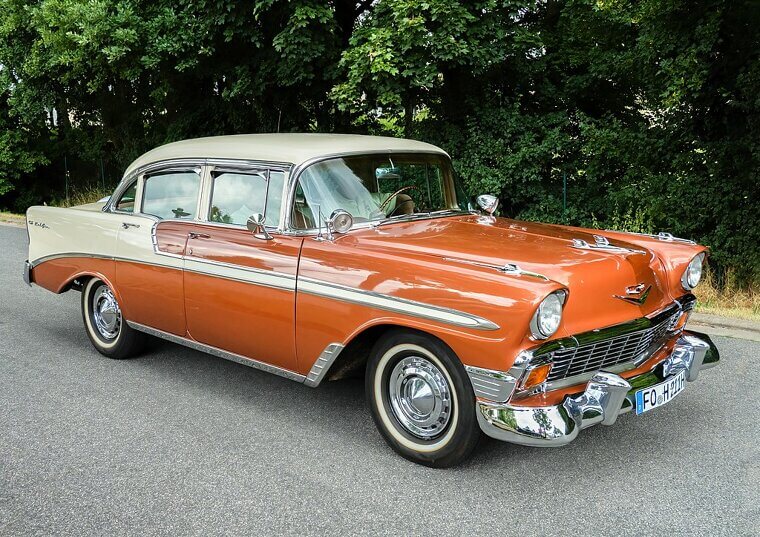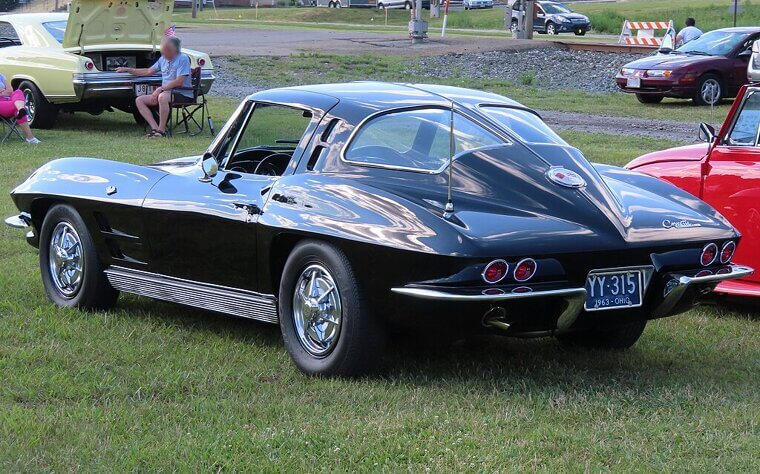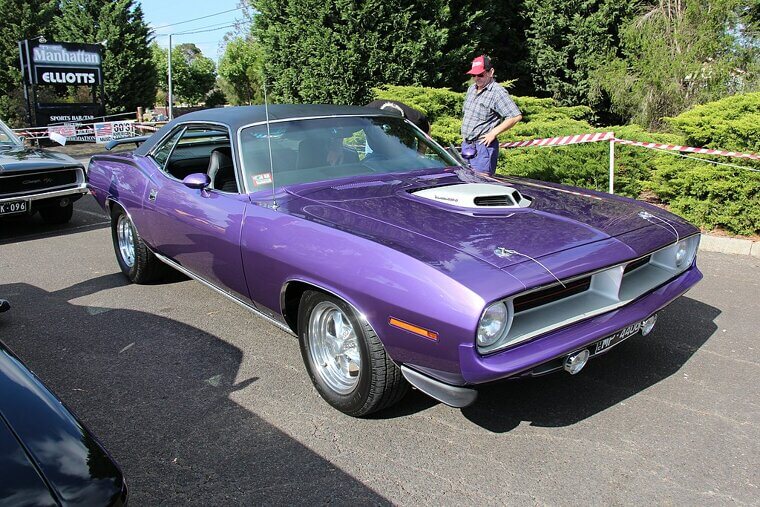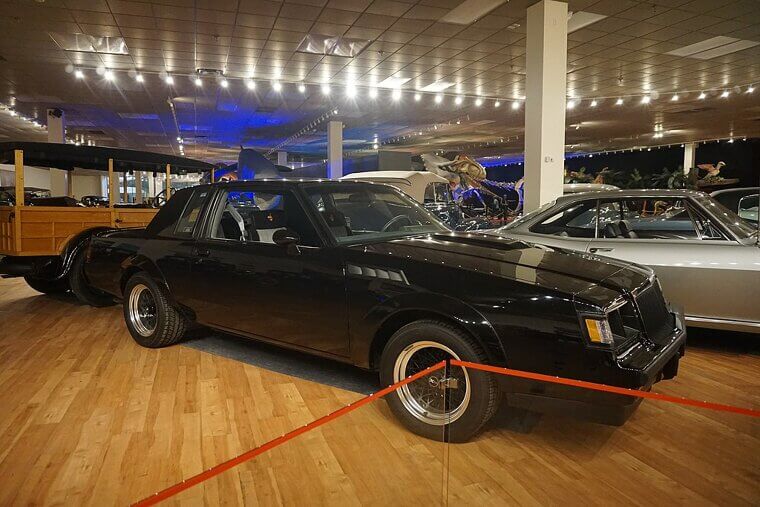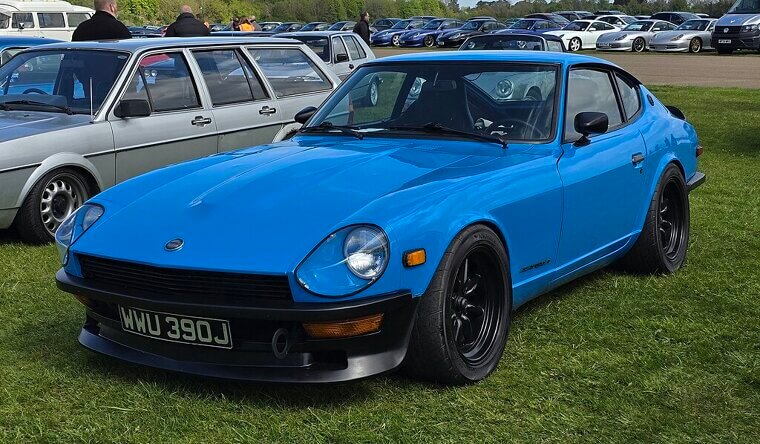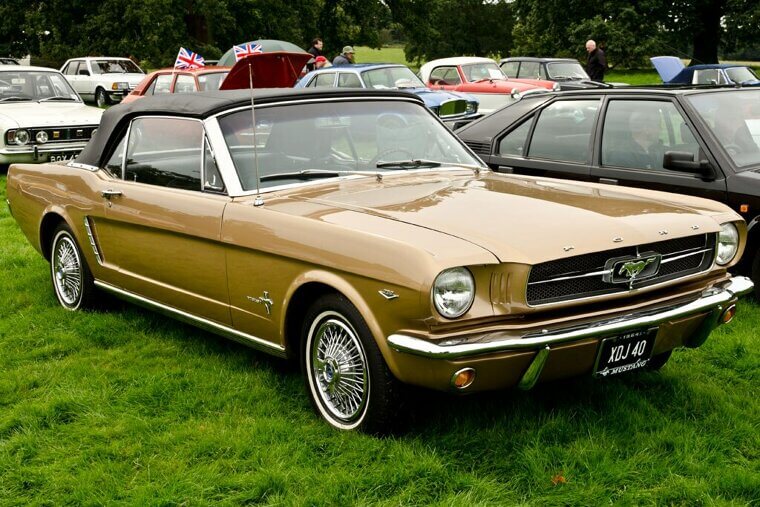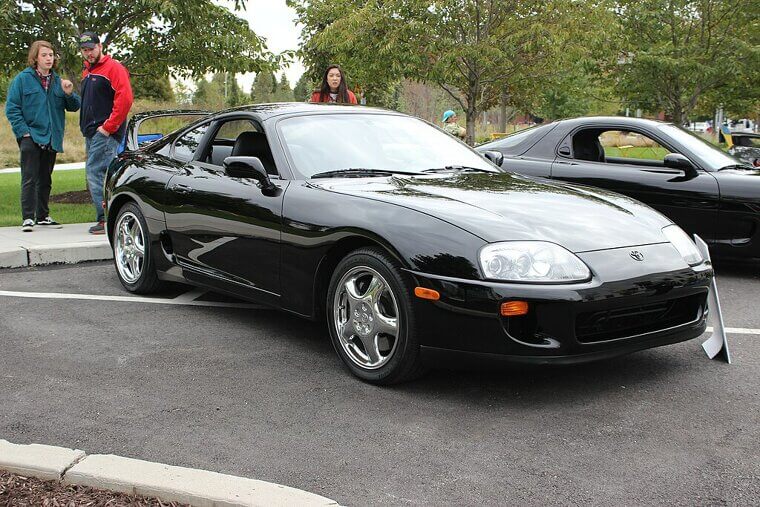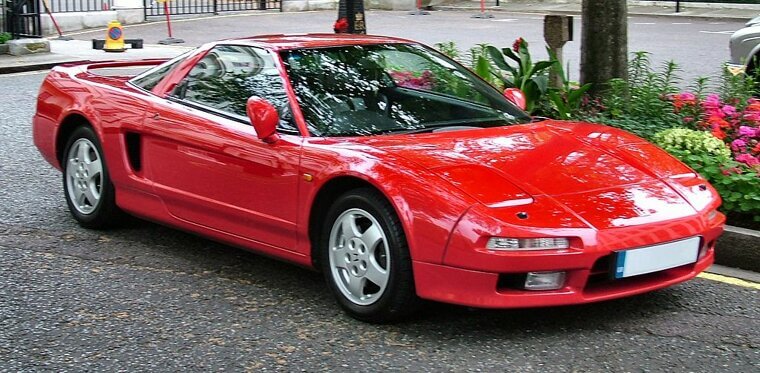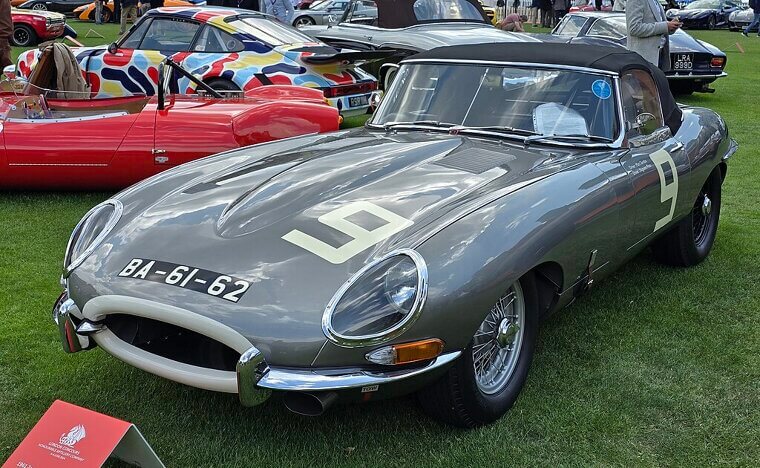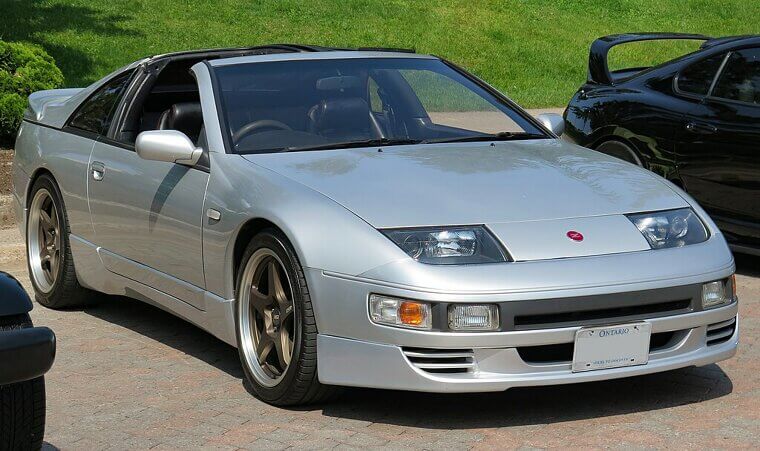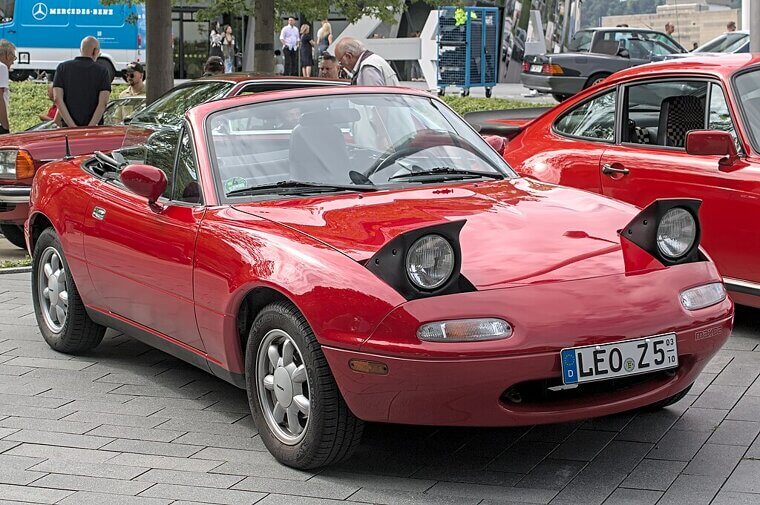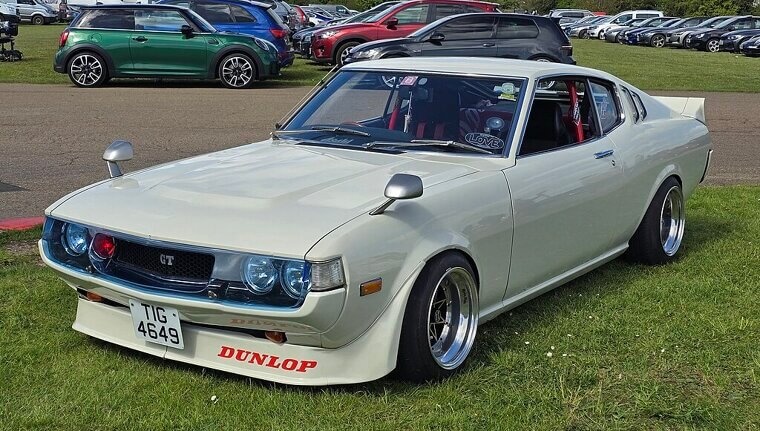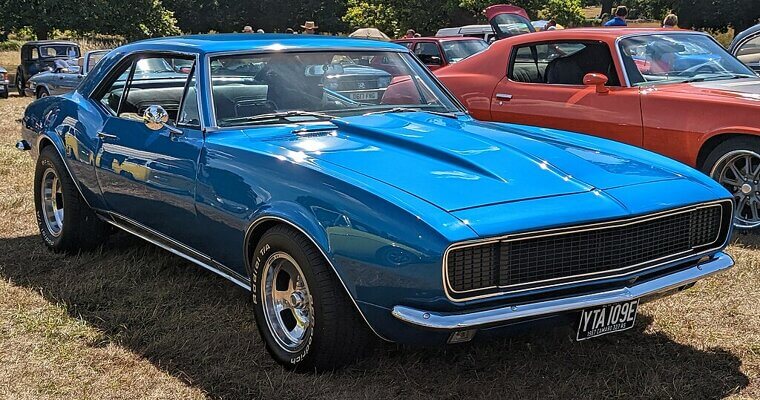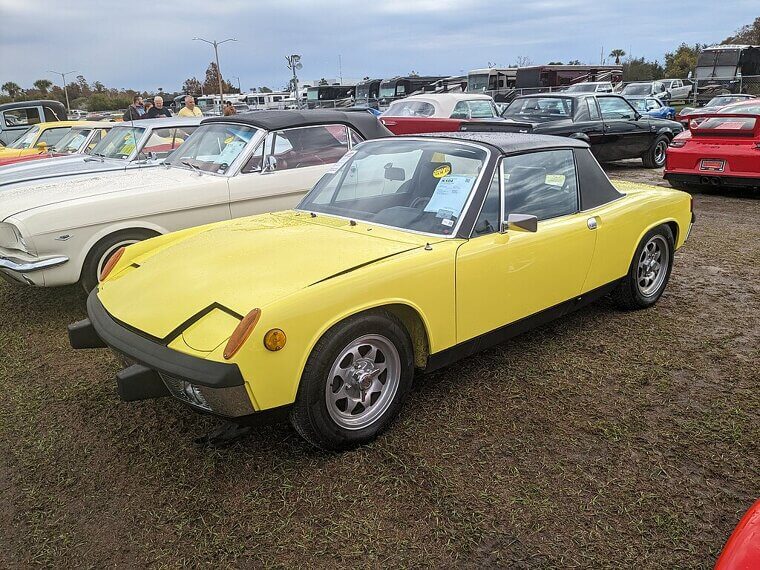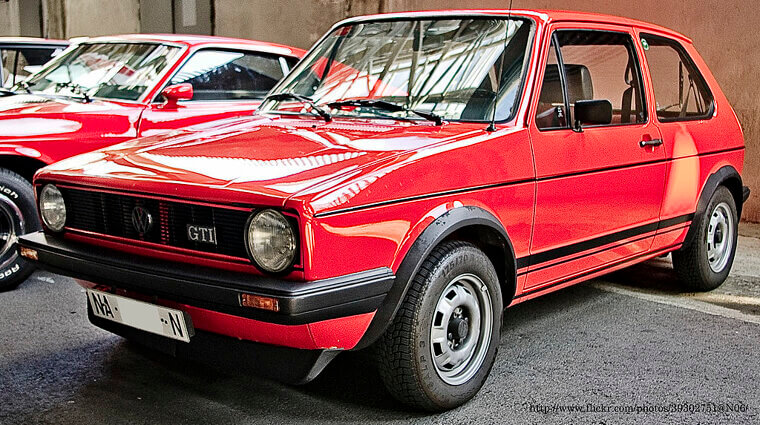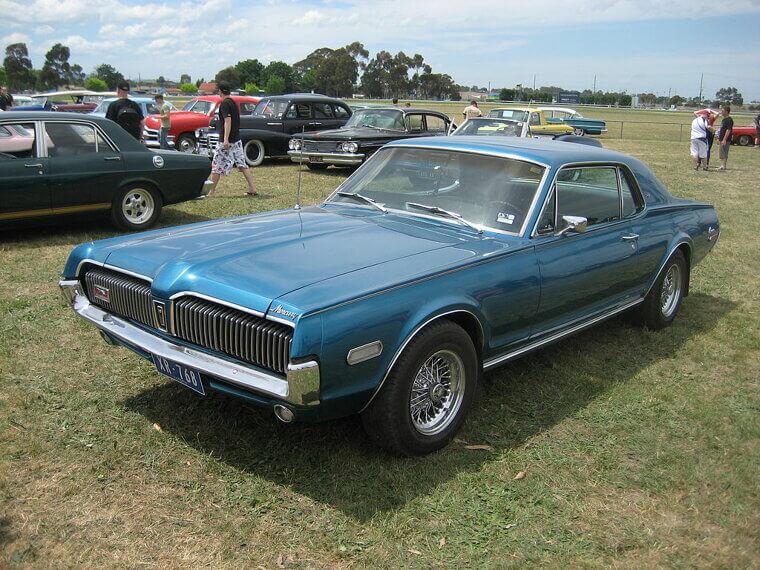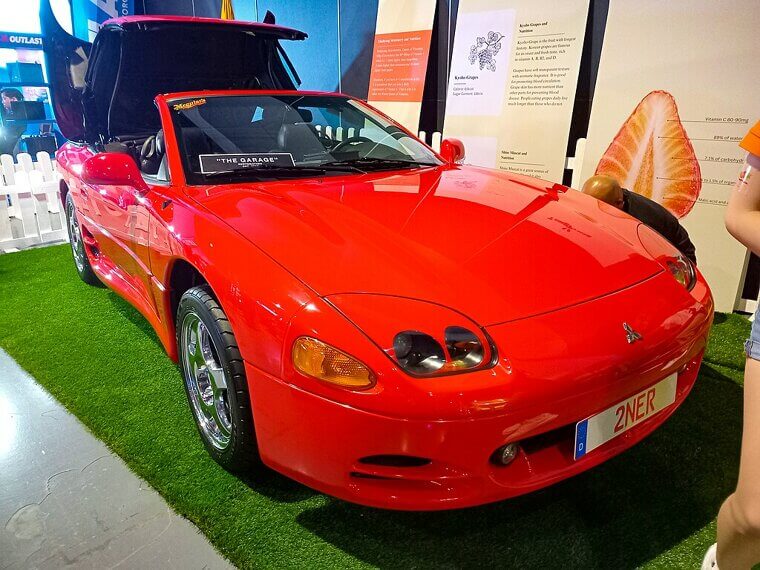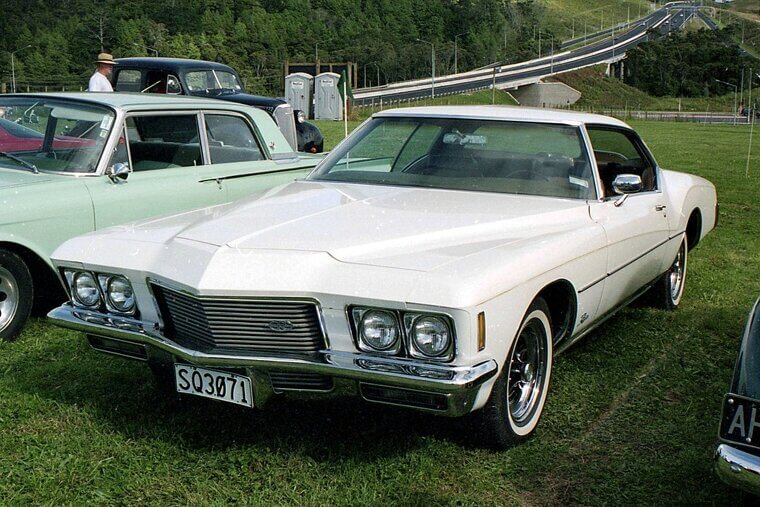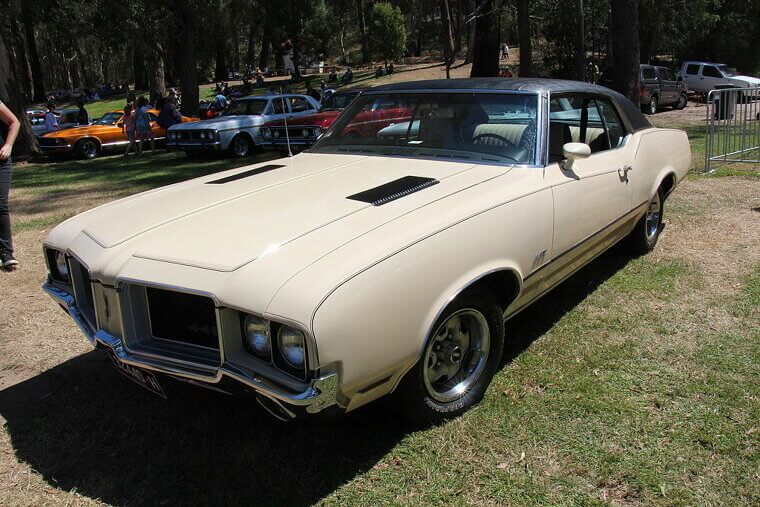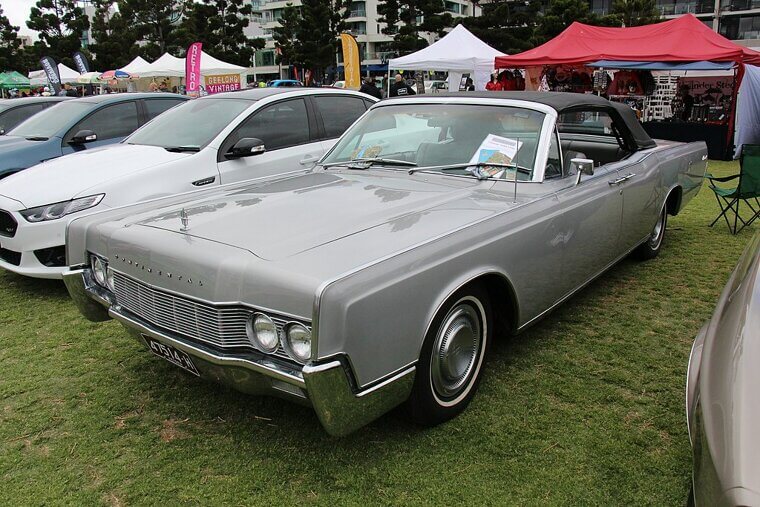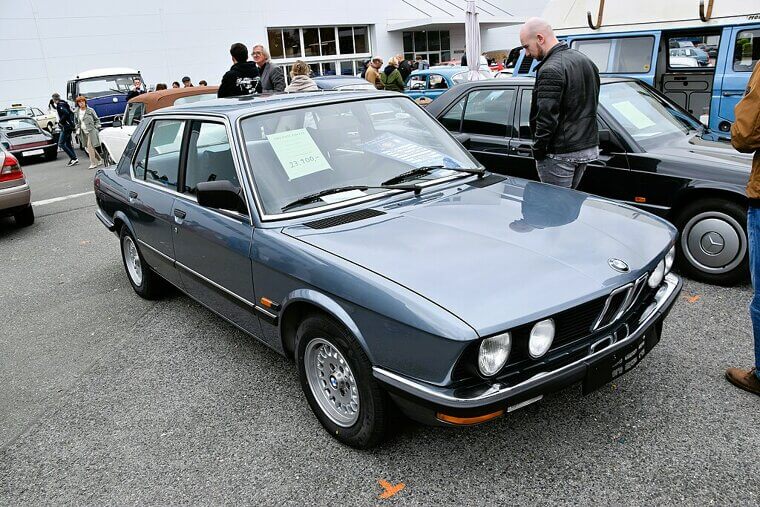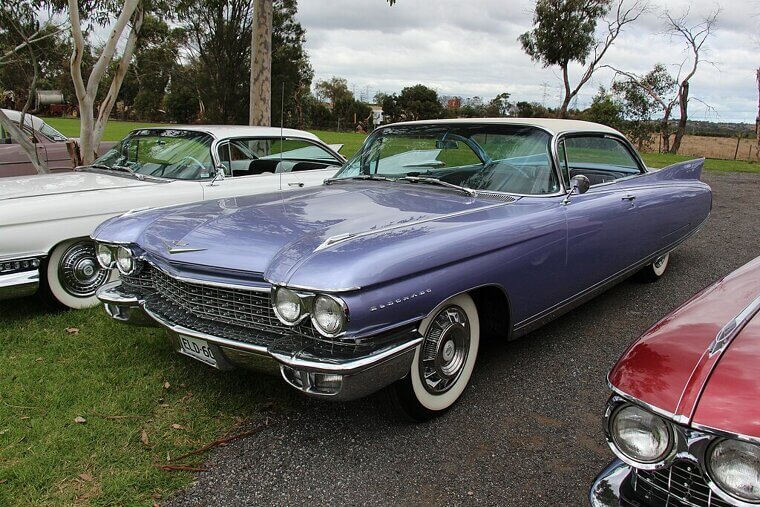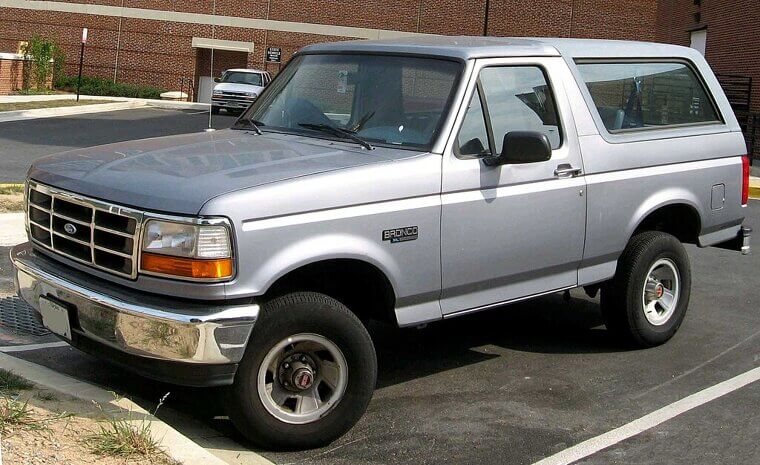DeLorean DMC-12 (1983)
The iconic DMC-12 proves that legacy isn’t always about performance. Its stainless steel chassis made it heavy and slow, and DeLorean as a company went under before the DMC became legendary. “Back to the Future” gave it new life, and pop culture power has made it immortal.
Ford Mustang Fastback (1965)
During Mustang mania the Fastback version rolled onto the scene, and drivers welcomed it with open arms as the coolest-looking model so far. Steve McQueen made it even more famous in “Bullitt,” so now it’s worth more than some peoples’ houses.
Dodge Charger R/T (1969)
With its curvy coke bottle shape and a choice of either a feral 440 Magnum or 426 HEMI, the Dodge Charger was destined for popularity even before “The Dukes of Hazzard” gave it pop culture immortality. You need to sell your soul to own one these days.
Chevrolet Bel Air (1957)
Whether it’s a coupe or a convertible, the Bel Air defines ’50s flair with its chrome grill, retro-futuristic Jetsons tailfins and its golden “V” badge as the cherry on top. It’s beautiful, classic and timeless, but it’s also practically priceless - these babies clean up at auctions.
Chevrolet Corvette Sting Ray (Split-Window) (1963)
The split-window design was impractical (hello, visibility loss) so it only lasted a year, but it made the Sting Ray famous. It was also that same mistake that caused its value to shoot into orbit like a rocket! If you have one, brag about it.
Plymouth Hemi ‘Cuda (1970)
Few muscle cars could flex with the force of the Hemi ‘Cuda, especially if it had a 426 HEMI - it radiated aggression, and practically ate other cars for breakfast. Its massive price tag and insurance cost meant few were made though, and today they sell for over $1 million.
Buick GNX (1987)
Although the Grand National was an unassuming powerhouse in its own right, the GNX (Grand National Experiment) knocked it up several notches with a ASC/McLaren-tuned turbocharged 3.8L V6 that could leave Ferraris in its dust. It looks like a supervillain’s car, and time hasn’t dulled its cool.
Pontiac GTO Judge (1969)
The Judge was the epitome of muscle cars in its era - it was flashy, loud, and its powerful engine options roared like angry thunder. Among all its brash colors, the iconic carousel red paint job was the most popular, so if you had one and sold it, collectors are judging you right now!
Datsun 240Z (1971)
While U.S. muscle cars were all bulk and roar, the Japanese 240z was like a finely-honed blade - sleek, precise and deadly, yet somehow also affordable. It’s those qualities that make it worth so much now; its new price was criminally low, so it was overlooked. Collectors know better.
Ford Mustang Convertible (1964½)
Where other sporty cars were expensive, the Mustang Convertible rolled in with its sweet V8 options and attractive price tag. The topless beauty stole the show. It proved to America that sports cars didn’t have to break the bank balance, and these days it’s a U.S. icon.
Toyota Supra Turbo (Mk4) (1993)
The Supra Turbo was already a snarling beast on the street with its twin-turbo 2JZ-GTE engine, rounded body and winged rear, but “The Fast and the Furious” made it a pop culture and a tuning legend. Resale prices moved faster than the car - now it’s easily worth six figures at auction.
BMW M3 (E30) (1989)
The E30 M3 had homologation baked into its design, so it was a street car in clothes only - under that balanced chassis was a need for speed and a 2.3L S14 engine that handled like a dream. There were only 16,000 road-worthy M3s made worldwide, making them a collectors’ holy grail.
Shelby GT350 (1966 )
With the 1965 GT350, vehicular genius Carroll Shelby saw the Mustang and said “hold my beer.” He went even further by working his magic on the ’66 version, ironing out the creases and giving it track-worthy suspension! Fewer than 2,400 were made, and Shelby’s touch adds even more prestige to a collector’s dream.
Acura NSX (1991)
With feedback from Brazilian racing driver Ayrton Senna, Honda created the NSX, a street-legal supercar that left Ferraris nervously sweating at stoplights. The performance was exotic, the engineering admirable, and you could still use it as a daily drive car! It was massively undervalued, and resold for peanuts before its worth was discovered.
Porsche 911 Carrera (G50) (1987)
The 911 was a classic ’80s ride even before the G50, then Porsche went and pushed it further with added refinement such as the 5-speed transmission and better shifting. Purists love it, but its most adored feature is its air-cooled 3.2L flat-six, which sell like hotcakes.
Mazda RX-7 (1979)
Japan rolled up to the sports car party and kicked the door down with the RX-7, a sharp-looking beast with buttery smooth handling and Rev-heavy 1.1L rotary engine that snuck in right before emissions regs choked the life out of unrestrained speed. Collectors treat first gen RX-7s like a horse lover would a unicorn.
Chevrolet Chevelle SS 454 (1970)
The drag-strip destroying SS 454 raised the bar for muscle cars in the ’70s thanks to its beastly 454-cubic-inch LS6 V8 engine capable of generating 450 horsepower (hp) and rippling torque. It shredded tires, melted asphalt and will make your wallet cry tears if you sold one.
Jaguar E-Type (1961)
Enzo Ferrari himself apparently called the Jaguar E-Type “the most beautiful car ever made,” and it was more than just eye candy; It crammed a barely-restrained 3.8L straight-six engine under the hood that could make 150 mph. It wasn’t just a car - it was a rolling piece of art!
Nissan 300ZX Twin Turbo (1991)
Nissan brought a twin turbo and rear wheel drive attitude to the show with its 300ZX flagship sports car, but it wasn’t just all brawn - it had tech too, such as its multi-link suspension. Performance, tech and reliability is a holy trinity, so now it’s a hidden gem.
Mazda Miata (NA) (1990)
The NA Mirata was simple, but its lightweight chassis, rear-wheel drive and 1.6L four-cylinder engine made it super responsive, so it could take corners as if they weren’t even there! It brought the fun back into driving, and low-mileage models are like gold.
AMC AMX (1969)
You wouldn’t believe that a small, two-seater muscle car like the AMX packed the spirit of a titan (and the engine of one, thanks to its big-block V8 engine shoved under the hood). This underdog had bite, but the alphas overshadowed AMC back in the day; now people know how collectible AMXs are.
Toyota Celica GT Liftback (1976)
Toyota took the muscle of the legendary U.S. Mustangs and made it more compact and nimble, with workhorse reliability. The GT Liftback’s rear-wheel-drive and 2.2L engine didn’t overwhelm drivers, it just added to its character and collectibility. It’ll make JDM fanatics froth at the mouth.
Chevrolet Camaro RS/SS (1967)
Chevy rose to the Mustang’s challenge with the Camaro’s RS (Rally Sport) and SS (Super Sport) trims, which offered hideaway headlights and better performance respectively. Its 350 V8 made it a worthy rival, but even after the muscle wars those trims bring in the Benjamins.
Porsche 914 (1973)
Available with 2.0L flat-four or flat-six engine options, the 914 didn’t sound thrilling but VW and Porsche worked their magic to create a balanced and fun experience aimed at dedicated drivers. It was cheap at one time (yes, a cheap Porsche!) so now it’s as rare as rocking horse poop.
Volkswagen GTI (Mk1) (1984)
The GTI is the OG hot hatch that showed everyone what a small car was really capable of. Packing a 1.8L fuel-injected engine and cheeky trims, it was affordable, enjoyable and felt like a performant go-kart with a glow-up in the best way.
Mercury Cougar XR7 (1968)
Mercury took the Mustang’s platform as a base and piled luxury and refinement on top to create the XR7, a beauty with hidden headlights, woodgrain dash and V8 engine options. Effortless merging power and class, the XR7 was undervalued until now.
Mitsubishi 3000GT VR-4 (1995)
The 3000GT VR-4 was way ahead of its time; four-wheel steering, AWD, adaptive suspension and twin turbos practically made it the Batmobile. It was pure ’90s lightning on wheels, and modern tuners can’t get enough of it.
Buick Riviera Boattail (1971)
As you may have guessed, the wild rear styling was inspired by boats, and regardless of whether you love or hate it, you won’t forget it! Many modern collectors classify its quirks as retro charm, and nostalgia brings home to bacon.
Oldsmobile 442 W-30 (1970)
The 442 W-30 had subtle styling, but it was a muscle car sleeper which could flex through its metaphorical tuxedo when the pedal went down. A 455 cu V8 engine, fiberglass hood, and mountains of torque made it faster than a Chevelle SS and it’s a rare find now.
Toyota Land Cruiser FJ40 (1982)
Toyota’s overengineered FJ40 raised the bar for modern 4X4s with its bulletproof reliability, indefatigable offroad grit and immortal inline-six engine. It could weather an apocalypse unscathed, and now collectors trawl auctions for them.
Lincoln Continental (Suicide Doors) (1965)
With its iconic “suicide doors” the Lincoln Continental was everywhere at one time, the choice of vehicle for everyone from presidents such as JFK to hip-hop stars and movie villains. It was a graceful, powerful and dangerous icon that people scrabble for these days.
Pontiac Trans Am (1977)
When anyone thinks of the Trans Am, they picture the 1977 black-and-gold model driven by Burt Reynolds in the series “Smokey and the Bandit.” Its performance might have been exaggerated a little, but it still had enough oomph for a ’70s rebel.
BMW 528i (E28) (1981)
It didn’t burn tires, but there’s no doubting the class and elegance of the E28 and its straight-six engine that purred like a cat with cream. Modern BMWs are often weight-shamed and many argue they’ve lost soul, but the E28 remains a snapshot of the brand at its height.
Cadillac Eldorado Biarritz (1960)
A chrome-covered, be-finned beauty that looks like it rode out of an advertisement for classic Americana, the Eldorado Biarritz is a torque-filled parade float for nostalgia, and that’s exactly what makes it so popular!
Ford Bronco XLT (1992)
Sure, it found infamy thanks to OJ, but that hasn’t stopped the values of the Bronco XLT from skyrocketing. Maybe it's the boxy, minecraft aesthetic or the simple nature of its engineering, or perhaps no press is bad press. It’s a collector’s item now, regardless.




